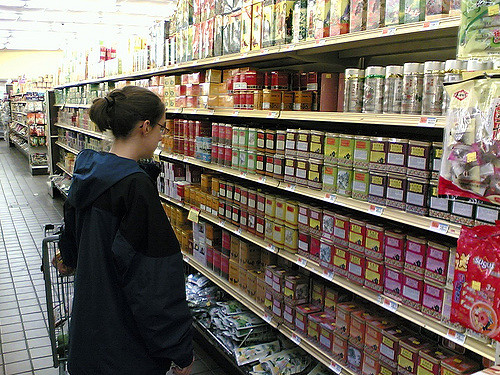Sales revenues have flat-lined in categories that were historically growth engines. Big food is not showing the revenue growth that it should, given its current valuations. Conversely, consumers are changing, and they don’t see big food companies changing with them.
Smaller, emerging brands gaining the upper hand is an enigma to many major players in the food and beverage industry. Do consumer really dislike big food companies? Is big food’s day of reckoning at hand?
These sobering questions were at the heart of a panel discussion at GMA’s 2016 Leadership Forum this past summer where I joined consultants from A.T. Kearney and Black Monk Consulting and a food executive from Cargill to deliberate issues and posit ways forward for big food companies. If there is an upside for big companies here, it is that consumers don’t have some sort of vendetta against them.
In truth, the heart of the matter isn’t if consumers hate big food companies; it’s about what they are looking for from any food and beverage company. What consumers are saying is, “I’m changing and looking for things that are healthier” — and they don’t see big food offering those options. This leaves consumers no other alternative but to look elsewhere for them.
Expecting more from food and beverage manufacturers reflects the social, economic and cultural shifts that are reshaping consumers’ eating and drinking habits. Specifically, who we are, what we do, how we shop and what we value are morphing. Acknowledging these macro dynamic shifts is essential to understanding eating culture and eating occasions today.
Examples of these macro shifts include:
- Who we are is changing: There are fewer households with kids, more single-person households and the rise of men as primary shoppers.
- What we do: We are eating alone and snacking more, and meal rituals are diminishing. We are increasingly turning to the food service sector to satisfy our food needs and wants.
- How we shop: Multi-channel shopping is now the norm, and immediate consumption is rising.
- What we value: We live in a changing culture of health and wellness where fresh is the symbol of quality in food and beverage, and there is greater appreciation for personalized, customized and global foods.
These shifts have led to a dynamic modern food culture, where the predictable, transactional days of cooking and eating have evolved into a contemporary eating culture where values are in flux, products are distinct and cooking is about discovery, not chores. Today’s food culture is more playful — and everything is about consumer choice.
Other consumer-driven trends reshaping today’s food and beverage landscape include: rising importance of transparency, consumer interest in minimal processing and freshness is on the rise, and consumers believe their purchasing decisions have a greater impact on society than their voting decisions.
Parallel to findings presented in an A.T. Kearney white paper Is Big Food in Trouble? (co-authored with The Hartman Group and distributed at the GMA Forum), Hartman Group analysis of attributes driving growth in the range of 10% to over 50% in xAOC sales data finds clear consumer preferences for formerly niche market segments. These niche segments include beverages with the attribute “minimally processed” and packaged foods with the attributes “how it was made,” “high protein, low sugar” and “culinary-grade flavor.”
While it’s often thought that consumer appreciation for what are often described as “premium” foods and beverages is strictly relegated to “upmarket” consumers with higher income and education, we are seeing that even lower-income consumers are seeking many of the same attributes, but they aren’t always able to act on their aspirations because of more pragmatic concerns, such as price and access.
In order to regain some of the market momentum that smaller, more progressive food and beverage brands have taken from established brands, there is an array of options open to companies:
- Brands that are not iconic can de-process their products to better reflect consumer desires for simpler ingredients.
- Marketers can build new brands that resonate with modern food culture, utilizing ingredients and narratives that reflect sensitivity to authenticity and transparency.
- Through acquisition of small and medium-size food and beverage brands, large producers can invest early in the food and beverage brand life cycles to capture growth and optimal returns.
For most large CPG companies, all of these options will need to be pursued in order to regain consumer interest and dollars.
As CEO of The Hartman Group, Demeritt drives the vision, strategy, operations and results-oriented culture for the company’s associates as The Hartman Group furthers its offerings of tactical thinking, consumer and market intelligence, cultural competency and innovative intellectual capital to a global marketplace.
__________________________________________________
If you enjoyed this article, join SmartBrief’s email list for more stories about the food and beverage industry. We offer 17 newsletters covering the industry from restaurants to food manufacturing.
